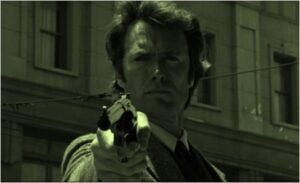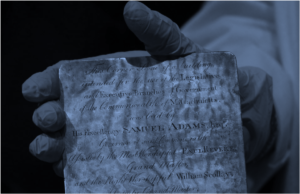The Point: If you’re like most of the leaders we work with here at Tip of the Spear, you’re a flame-thrower! However, lately we’ve been on a crusade to “throw flames” with much more targeted focus. In other words, instead of destroying everything in your path, focusing more on specific targets and getting better results. But there is so much that gets in your typical leaders way; Board commitments, Competing projects, Budget meetings, etc… And don’t forget about your non-professional (i.e., personal) time! This post is dedicated to a new technique, one we’ve begun implementing with much success in our Centered Executive Coaching programs that focuses on mindfulness… Enjoy!
Mindfulness-Based Stress Reduction (MBSR)
There’s a popular obsession in leading organizations and the Bay Area with mindfulness as a secret strategy to health and happiness. “Health and happiness?” you may be asking, I thought this was a post about how I as a leader can lead better (the central theme of “The Point Blog” and the leadership challenge at hand)… Well read on!
There is a growing body of evidence that suggests that MBSR has clear benefits to those that participate. Mindfulness-Based Stress Reduction (MBSR) is an 8-week program developed by Jon Kabat-Zinn (an MIT-educated scientist).
Mindfulness Techniques (including Meditation)
At the heart of this technique is harnessing one’s ability to be present (make that fully present) in the moment (each and every moment). If that’s the goal… The vehicle to arrive at that goal would be meditation. Ask yourself this question: “How hard would it be to think of one thing, just one sole thing at a time in a moment?”
Here are some of the challenges that you probably face:
- Technology requires (no, it demands) that you fracture attention into smaller and smaller bits.
- We answer a call from a work-colleague while attending your daughter’s soccer game.
- We pay the bills while watching TV at night.
- We order dinner while stuck in traffic (hope it doesn’t get cold?)
I’m Busy, You’re Busy… So What?
This is a time when no one seems to have enough time, yet we continue to have items compete for those limited time moments (read that as your capacity… You still only get 24 hours in a day, and 7 days in a week!) Technology allows us to be in several places simultaneously (in the past 24-hours, I’ve been in Missouri, Colorado, California, and India… Not a bad day, right?) However, are we in the right places at the right time, and are we in the places where we want/should be?
At the heart of mindfulness is the ability to recognize the present, not to dwell on the past or worry about the future… Simply to “be” in the present without judgment, fear, pain, or any of the other emotions. Think of MBSR as a technique that will allow you to quiet the extremely busy mind.
So What is Mindfulness-Based Stress Reduction (MBSR) Good For?
While the body of evidence as noted above is mounting, it appears as thought MBSR is good for anyone that goes into the practice with an open mind, willing to learn. Benefits of participants seem to revolve around reductions in stress, anxiety, pain, and depression.
So where does this fit in for the today’s business leader? If distraction appears to be the illness of most leaders, perhaps MBSR can be seen as the cure. The goal of mindfulness is to focus attention fully to what you are doing. So with all this in mind, could mindfulness be the tool for dealing with the daily onslaught in the C-Suite, both emotionally and practically?
So Haven’t I Heard This All Before?
If you think you’ve heard this idea of mindfulness before, but perhaps called another name, you’re thinking along the same lines as I was! I did a lot of research regarding why leaders think the way they do, and how if you could harness the same leadership thought-patterns the average person could turn into something spectacular (Close, but no cigar!) There also is a strong religious, almost Buddhist underlying current to this whole MBSR program. Therein lies the marketing genius of Jon Kabat-Zinn.
The religious aspect of mindfulness is overcome by avoiding any talk of spirituality. Instead there is a more logical approach (think of it as common sense): If you consider your attention span a muscle, and as with any muscle it makes sense to exercise said muscle (The exercise would occur through meditation). As with any muscle that is exercise, it will develop certain muscle mass over time.
Another aspect that can be gleaned from mindfulness is what science is teaching us about the brain, and its ability to rewire itself and adapt. This study, known as neuroplasticity, suggests that there are benefits, both concrete and provable, to exercising the brain.
SUMMARY
As I mentioned earlier, we’ve begun adding a “mindfulness” approach (similar to the 8-week MBSR program) in our Centered Executive Coaching initiatives. The feedback is very positive, as leaders report greater focus, ability to concentrate as well as less wasted time, stress, and guilt. For a great read on the topic, pickup a copy of Jon Kabat-Zinn’s “Full Catastrophe Living” (catchy title, huh?) and/or visit the Institute for Mindful Leadership (http://instituteformindfulleadership.org/). If you’d like to explore Centered Executive Coaching, connect with us!
Sincerely yours,
Sam Palazzolo
PS – You may also enjoy some of the other recent posts I wrote:
- The Leadership Challenge: Are You Better Off Lucky Than Good?
- The Leadership Challenge: Can You Drive the Development of Leaders Who Transform Your Business?
- What’s Inside Your Leadership Time Capsule?
- The Leadership Challenge: 10 Characteristics to Develop Your Executive Presence
- The Leadership Challenge: Happy New Year! Now What?
- Leadership Amnesia: Should You Forget the Past to Move Forward to a Better Future?
- The Leadership Challenge: Are Your SMART Goals DUMB?
- The Leadership Challenge: Are You Climbing the Leadership Mountain?
- The Leadership Challenge: They Want You To Fail! 8 Leadership Tips to Overcome Failure
- The Leadership Challenge: Do You Exercise Your Moral Muscle?
- The Leadership Challenge: Conducting Post-Mortem Reviews
Sam Palazzolo is the Managing Director at Tip of the Spear Ventures, an agile Venture Capital and Business Advisory Services firm specializing in Executive Coaching, Leadership Development, and Communication Skills Training for Leaders.




